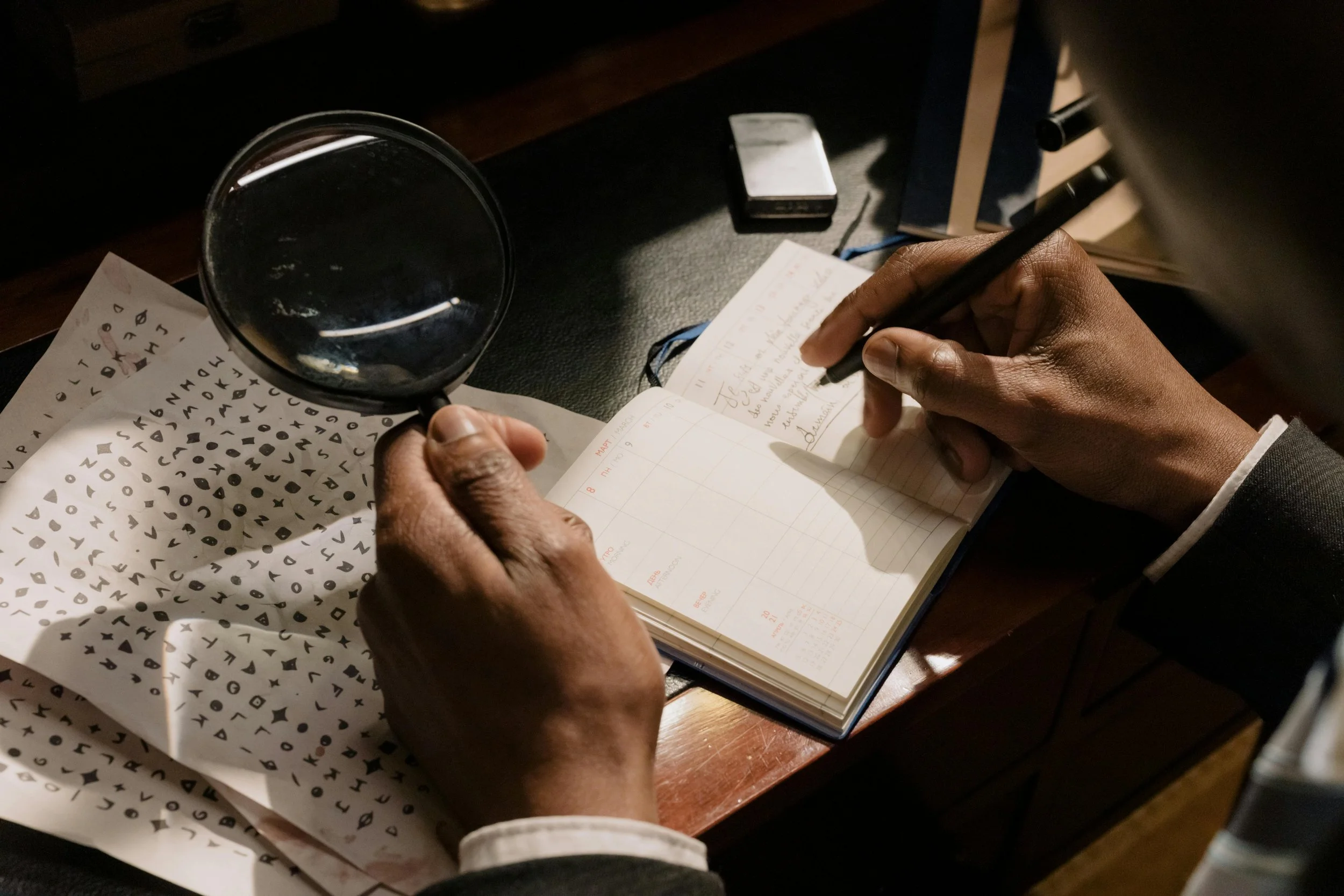Writing Gripping Suspense: Building Tension Scene by Scene
This post may contain affiliate links. If you make a purchase through these links, I may earn a small commission at no additional cost to you
Welcome: Let’s Get Your Readers Sweating
You know that feeling when your heart pounds a little harder, your eyes dart ahead, and you absolutely can’t stop reading, even if it’s way past bedtime? That’s the magic of suspense. Whether you write thrillers, mysteries, romance, or even fantasy, every story benefits from a little tension.
Hi, I’m Brandon Rohrbaugh, author, writing coach, and suspense lover. I’m here to break down what really works (and what doesn’t) when it comes to building suspense, one scene at a time. If you want your readers glued to the page, let’s dive in!
Table of Contents
What Makes Suspense Work?
Raise the Stakes Early (and Often)
Master the Art of Withholding
Scene Structure: Cliffhangers, Questions, and Reveals
Pacing: Fast, Slow, and Just Right
Layering Clues, Red Herrings, and Surprises
Writing Suspenseful Dialogue
Checklist: Is Your Scene Tense Enough?
Related Resources
Conclusion & Call to Action
What Makes Suspense Work?
Let’s bust a myth: suspense isn’t just for thrillers. It’s the feeling that something important is at stake and the outcome is uncertain. It keeps readers emotionally invested and desperate to find out what happens next.
Think about your favorite books or movies. The best ones use suspense by:
Making readers care about the outcome (will they survive? get caught? fall in love?)
Always dangling a question: “What’s going to happen next?”
Making the stakes personal, even if the problem is huge
No matter your genre, if you can make readers need to know what happens, you’ve nailed suspense.
Raise the Stakes Early (and Often)
Suspense needs fuel, and that fuel is stakes. What can your characters win, or lose? What do they stand to risk if things go wrong?
Start with a clear sense of what’s at stake in the opening chapters. Then, continue to raise those stakes as the story unfolds. Small complications snowball into bigger problems. And just when things seem manageable, toss in a twist.
Example:
In Gone Girl by Gillian Flynn, the stakes start with a missing wife and a worried husband. But with every chapter, the consequences, emotional, legal, even physical—just keep getting higher.
Ask yourself: What does my character care about most? How can I threaten it?
Master the Art of Withholding
Suspense isn’t about giving answers, it’s about asking the right questions, and holding back just enough information to keep readers hooked.
Drop hints, but don’t spill everything at once
Let characters (and readers) piece together clues
Use secrets, unreliable narrators, and shifting points of view
Pro Tip:
When you write a suspenseful scene, try ending the scene just before the answer is revealed. Let the tension simmer into the next chapter!
Scene Structure: Cliffhangers, Questions, and Reveals
Photo by cottonbro studio: https://www.pexels.com/photo/man-in-gray-long-sleeve-suit-holding-a-pen-8369520/
Every scene is an opportunity to either:
Leave your reader with a burning question
Deliver a twist that changes everything
Show a consequence that makes things worse
Cliffhangers don’t always have to be life-or-death. Sometimes, it’s a knock at the door, an unread text, or a character realizing something crucial.
Example:
At the end of a chapter, your detective finds a new clue, just as the lights go out. Who turned them off? Who’s there? Cue the next scene!
Pacing: Fast, Slow, and Just Right
Suspense isn’t all about pedal-to-the-metal action. Sometimes, slowing down builds tension. The key is variety.
Short, punchy sentences and chapters speed things up
Longer, detailed paragraphs let readers catch their breath—and make them wait for the next shock
Use pacing to match your scene: chase scenes move fast, but interrogations or tense conversations simmer
Example:
In The Girl with the Dragon Tattoo, Stieg Larsson alternates between fast-paced danger and slower, psychological tension—keeping the reader constantly on edge.
Layering Clues, Red Herrings, and Surprises
Great suspense is like a magic trick: show the reader one thing, then surprise them with another.
Plant real clues early—but mix in distractions and false leads (red herrings)
Let readers make predictions, then upend their expectations
Save one or two jaw-dropping reveals for the final act
External Resource:
Check out Reedsy’s guide on writing suspense for more ways to misdirect and surprise your audience.
Writing Suspenseful Dialogue
Photo by cottonbro studio: https://www.pexels.com/photo/photo-of-person-taking-down-notes-7319070/
Dialogue can be a powerful tension builder. Make your conversations do more than pass information.
Characters dodge questions, change subjects, or say one thing but mean another
Subtext is key—what’s really being said, and what’s being hidden?
Use short exchanges, interruptions, and silence for extra effect
Example:
In thrillers, an interrogation scene can be loaded with tension, even if nobody moves. The suspense comes from what’s left unsaid.
Checklist: Is Your Scene Tense Enough?
Before you move on, ask yourself:
What’s at stake in this scene?
What question is unanswered?
How is the outcome uncertain?
Does the scene end with tension or a hook?
Are the characters hiding anything (from each other or the reader)?
Print or download my Suspense Scene Checklist for easy reference as you draft!
Get the free checklist here!
Related Resources
Conclusion
You don’t have to write a thriller to make your story suspenseful. By playing with stakes, pacing, and questions, you can keep your readers on the edge of their seat, no matter what kind of story you’re telling.
How do you build suspense in your own writing? Share your favorite tip in the comments, or tag me with your best cliffhanger scene!
Need more help? Download my checklist, sign up for my newsletter, and get fresh resources delivered straight to your inbox.
Happy writing—and may your readers never want to put your book down!
Brandon Rohrbaugh | Author, Coach, and Master of Tension



